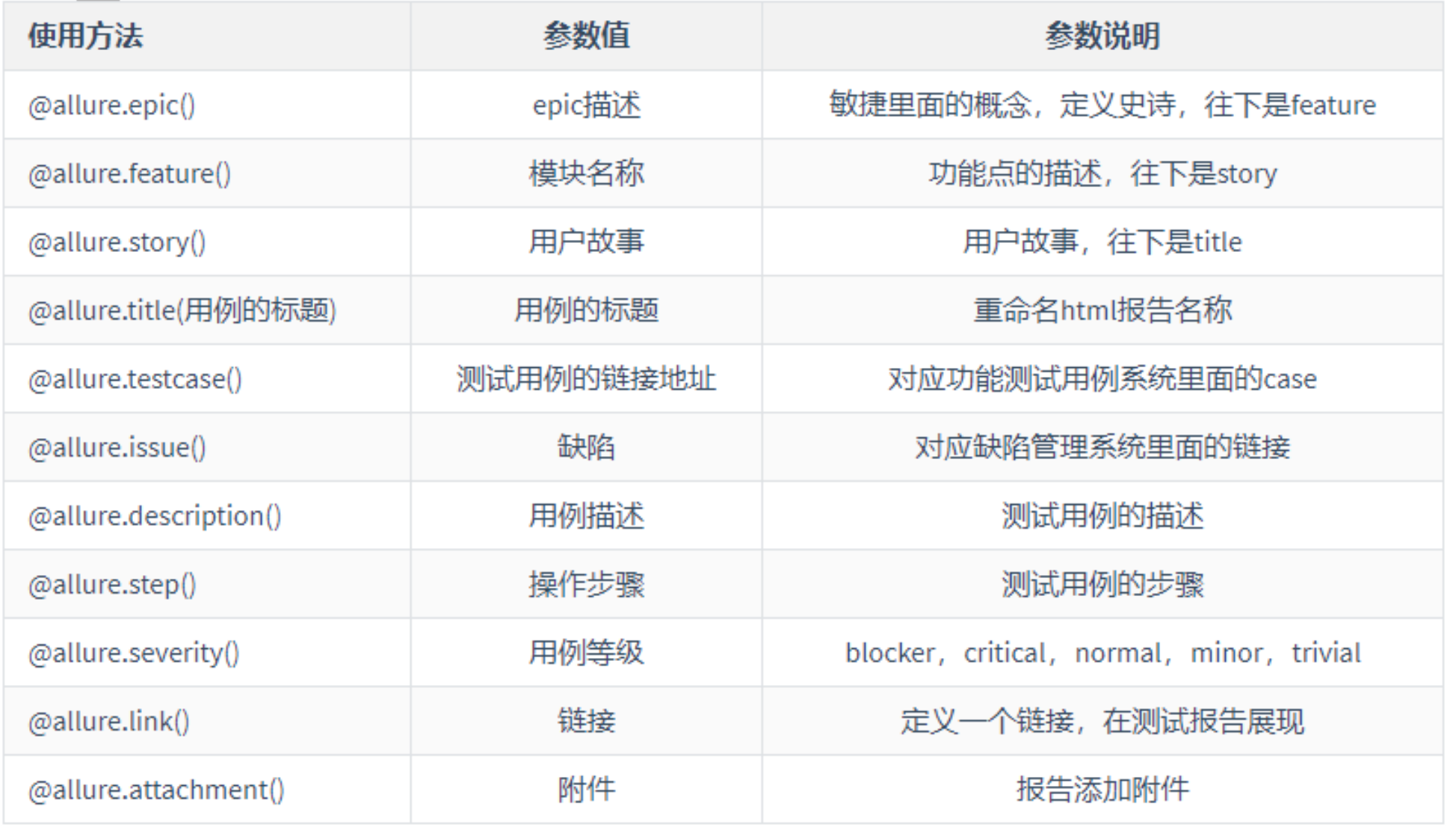pytest简介
pytest是一个非常成熟的全功能的python测试框架,主要特点有以下几点:
- 简单灵活,容易上手,文档丰富;
- 支持参数化,可以更细力度地控制需要测试的测试用例
- 能够支持简单的单元测试和复杂的功能测试,还可以用来做selenium/appnium等自动化测试,接口自动化测试(pytest+requests);
- pytest具有很多第三方插件,并且可以自定义扩展,比较好用的如pytest-selenium(集成selenium),pytest-html(测试报告生成),pytest-rerunfailures(失败case重复执行),pytest-xdist(多cpu分发)等;
- 测试用例的skip和xfail处理
- 可以很好的和CI工具结合,例如Jenkins
编写规则
- 测试文件以test开头(以test结尾也可以)
- 测试类以test开头,并且不能带有init方法
- 测试函数以test开头
- 断言使用基本的assert即可
Console参数介绍
- -v 用于显示每个测试函数的执行结果
- -q 只显示整体测试结果
- -s 用于显示测试函数中print()函数输出
- -x,--exitfirst,在第一个错误或测试失败时立即退出
- -h 帮助
执行测试
配置Pycharm执行
- Tools > Python Integrated tools > Default test runner
main方法
- pytest.main(['-s','-v','test_01.py'])
命令行
pytest查找测试策略
- 默认情况下,pytest会递归查找当前目录下所有以test开始或结尾的python脚本
- 执行文件内所有以test开始或结束的函数和方法
pytest指定测试函数
第一种,显示指定函数名.通过::标记
test_no_mark.py::test1
第二种,使用模糊匹配,使用-k选项表示
pytest -k func1 test_no_mark.py
第三种,使用pytest.mark在函数上进行标记
- 在测试函数上加上@pytest.mark.do 或者@pytest.mark.undo
- 创建pytest.ini配置文件
[pytest]
markers=
do: do
undo: undo - 在命令行启动pytest -m do test01.py
pytest参数化
在测试函数上面加上@pytest.mark.parametrize(paramname,paramvalue)
import pytest
testdata= [(1,2,3),(2,3,4),(7,8,9)] @pytest.mark.parametrize('a,b,expect',testdata) def test2(a,b,expect): result =a+b assert result == expect
pytest fixture
- 定义fixture跟定义普通函数差不多,唯一区别就是在函数上加个装饰器@pytest.fixture()
- fixture命名不要以test开头,跟用例区分开,fixture是有返回值,没有返回值默认为None
- 用例调用fixture的返回值,直接就是把fixture的函数名称当做变量名称
pytest setup和teardown
- 模块级(setup_moudule/teardown_module)开始于模块始末,全局的
- 函数级(setup_function/teardown_function)只对函数用例生效(不在类中)
- 类级(setup_class/teardown_class)只在类中前后运行一次(在类中)
- 方法级(setup_method/teardown_method)开始于方法始末(在类中)
- 类里面的(setup/teardown)运行在调用方法的前后
pytest allure生成测试报告
pip install allure-pytest
allure用例描述

import allure import pytest @pytest.fixture(scope="session") def login(): print("用例先登录") @allure.step("步骤1:点xxx") def step_1(): print("111") @allure.step("步骤2:点xxx") def step_2(): print("222") @allure.feature("编辑页面") class TestEditPage(): '''编辑页面''' @allure.story("这是一个xxx的用例") def test_1(self, login): '''用例描述:先登录,再去执行xxx''' step_1() step_2() print("xxx") @allure.story("打开a页面") def test_2(self, login): '''用例描述:先登录,再去执行yyy''' print("yyy") if __name__ == '__main__': # 注意生成测试报告 必须在命令行执行 # pytest --alluredir reports testcase/pytest/test6.py # allure serve reports pytest.main(['--alluredir', './report', '05 pytest allure生成测试报告.py'])
pytest 用例依赖
@pytest.mark.dependency




